MISSISSIPPI BURNING (1988)
Two FBI Agents with wildly different styles arrive in Mississippi to investigate the disappearance of some civil rights activists.
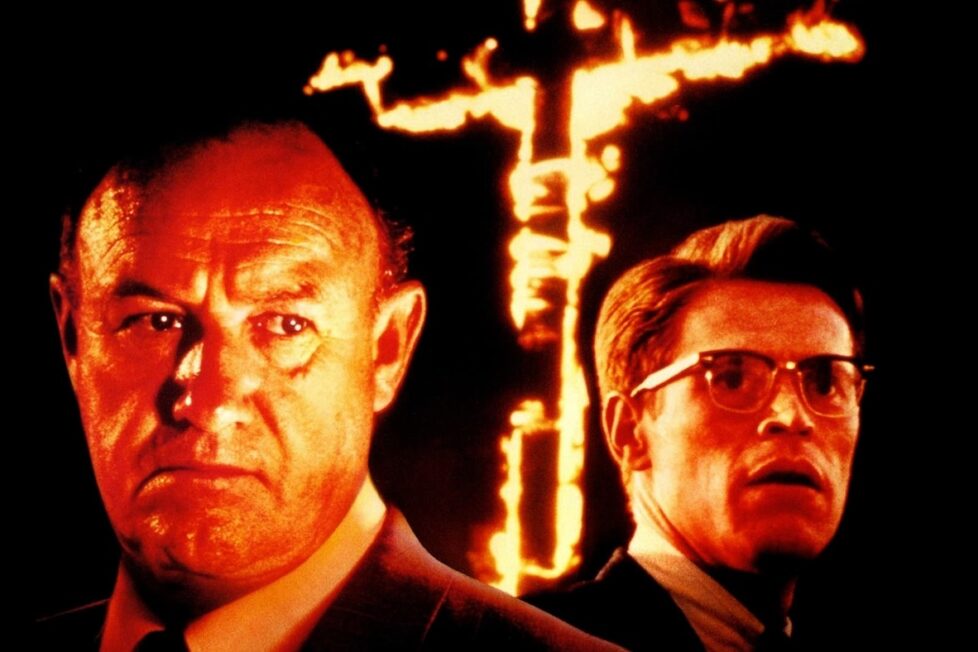
Two FBI Agents with wildly different styles arrive in Mississippi to investigate the disappearance of some civil rights activists.


A soothing voice croons a gospel song, begging God for deliverance through a storm. A small graveyard is illuminated in the night by the orange hue of fire. Behind it, a building is utterly engulfed in flame. The camera doesn’t cut away; instead, it stays firmly fixed on the structure, intent to show the starkly horrifying outcomes of hate, indoctrination, and bigotry. The sound of burning timber collapsing to the ground accompanies the singer’s beautiful voice, with the incessant crackling of fire sending chills down your spine. The film’s title hangs over the image: Mississippi Burning.
Alan Parker’s film begins with such unsettling violence and chilling ferocity that we’re immediately settled into the world he presents. Parker’s depiction of Mississippi is that of a totalitarian society masquerading as a democracy. Of course, it quickly becomes clear that the entire town is run by racists and rednecks. While the plot remains a sharply executed detective thriller, the message Parker imparts is even more hard-hitting: expunging such hatred is a task that no single investigation can fix. It requires digging out at the root. Mississippi Burning triumphs as a taut, enthralling film with an important story and mesmerising performances, overcoming an underlying white saviour narrative in the process.
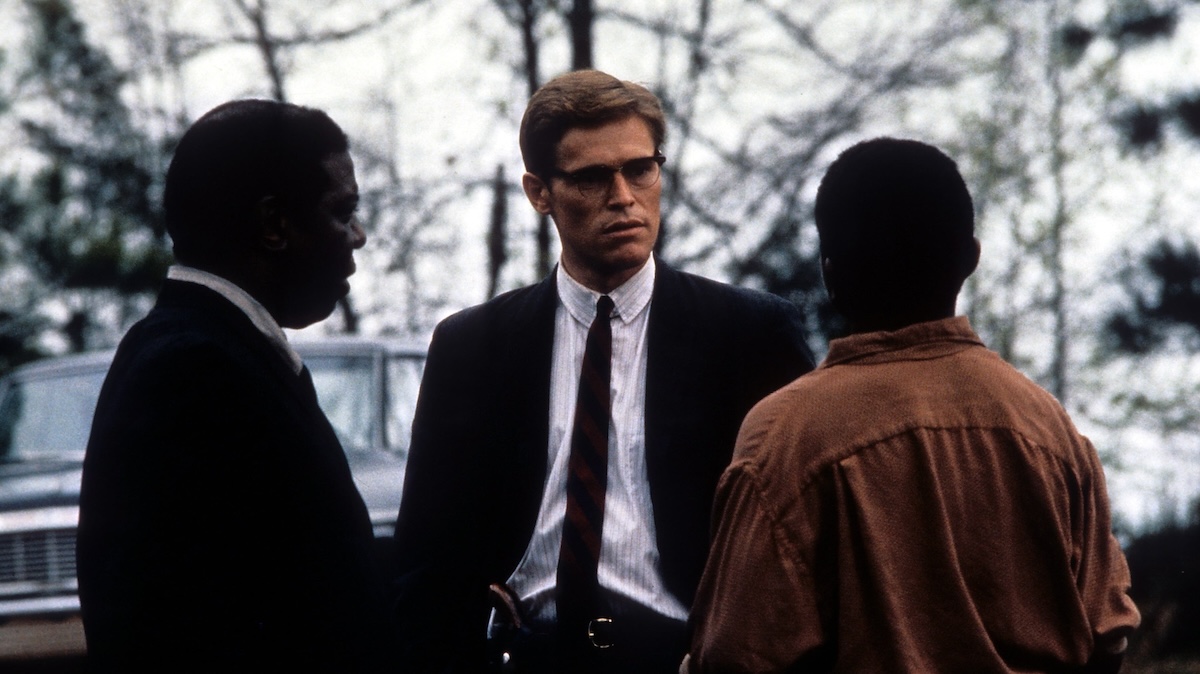
The plot of the film follows two detectives spearheading the investigation: Rupert Anderson (Gene Hackman, basing the role on John Proctor) and Alan Ward (Willem Dafoe, basing his part on Joseph Sullivan). In their car journey down to Mississippi, it’s clear from the beginning that they have personality differences that will be exacerbated by the stress of the case.
The performances enhance the overall quality of the film. Hackman demonstrates once again that few can match his intensity, which he’d previously demonstrated in the likes of The French Connection (1971) and The Conversation (1974). However, Hackman deftly incorporates a subtle, yet palpable layer of compassion in Anderson, ensuring he doesn’t just become a brute. He also possesses a nuanced shrewdness that makes him invaluable for the case. He’s an expert agitator, constantly provoking his suspects under the guise of mere humour, anticipating their accidental revelation of key information.
This grates on his partner, Alan Ward, who prefers to approach cases by the book. Though intelligent and competent, it’s clear his methods are mostly ineffective. It’s also evident that he’s mostly supposed to act as a foil for the older, wiser Anderson. Whenever Ward is mystified by the engrained level of resentment endemic in Mississippians, Anderson’s there to educate him with a personal anecdote or didactic fable. However, Ward’s perspective is equally important as it provides a lens through which we can see 1964 Mississippi through the eyes of an outsider. In this, we’re also allowed to feel appalled by the depravity onscreen. Looking through photos of lynchings and murder victims, Ward is sadly bewildered. His tone is melancholic, yet meditative: “Where does it come from? All this hatred…”
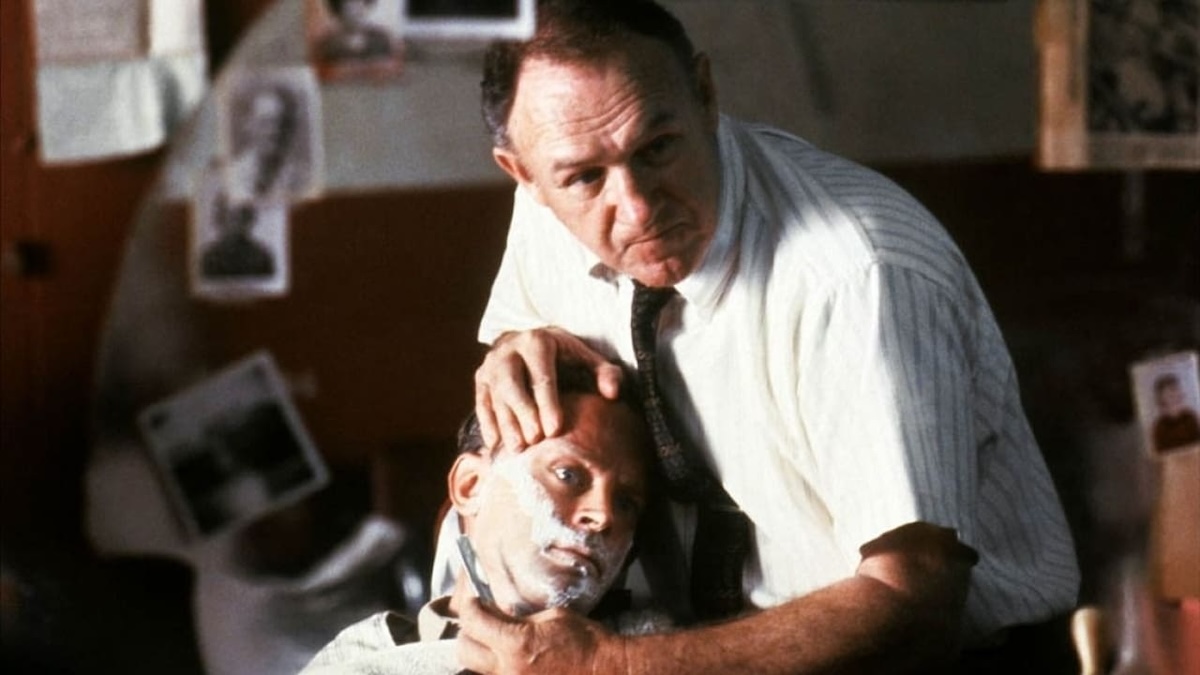
Mrs Pell (Frances McDormand) serves as an example of how one can dwell in, work beside, and marry such hatred while remaining opposed to it. McDormand’s performance is deeply moving. Aware of the abuses and the crimes present all around her, she finds herself impotent. She disagrees with it all, but silently, being wise not to speak her mind among a den of rattlesnakes. Her scenes with Hackman are sublime; while it feels as though there’s a mutual attraction, it’s never at the forefront of their interactions. Instead, a quiet, gracious empathy connects the pair.
Of course, to have a compelling protagonist requires an equally compelling antagonist. Fortunately, there’s quite a collection of impressively contemptuous characters in Mississippi Burning. The performances from Brad Dourif (The Exorcist III), Stephen Tobolowsky, and particularly Michael Rooker, steal the show. Tobolowsky shines as the Imperial Wizard of the Ku Klux Klan, who was so convincing in his role that supposedly his speech attracted genuine Klan members, receiving much of their support. This is immensely ironic given the fact that Tobolowsky is, in fact, Jewish.
Rooker delivers a showing so brimming with malice you think he’ll burst at any moment. Watching him sit in ebullition is nerve-wracking; one can never anticipate what he’ll do next, but expect it to be violent. When Anderson comes to question the group of bigots at their social club, Rooker’s demeanour is a convincing blend of fear, anger, and disgust. Two years earlier, Rooker made his film debut as the eponymous character in Henry: Portrait of a Serial Killer (1986). His jaw-dropping embodiment of a psychopath turned heads and he was cast in a similarly vehement role here. Perhaps what’s most laudable is that none of these renditions ever become cartoonish. These bigots are never caricatures, but measured portrayals of seething hate.
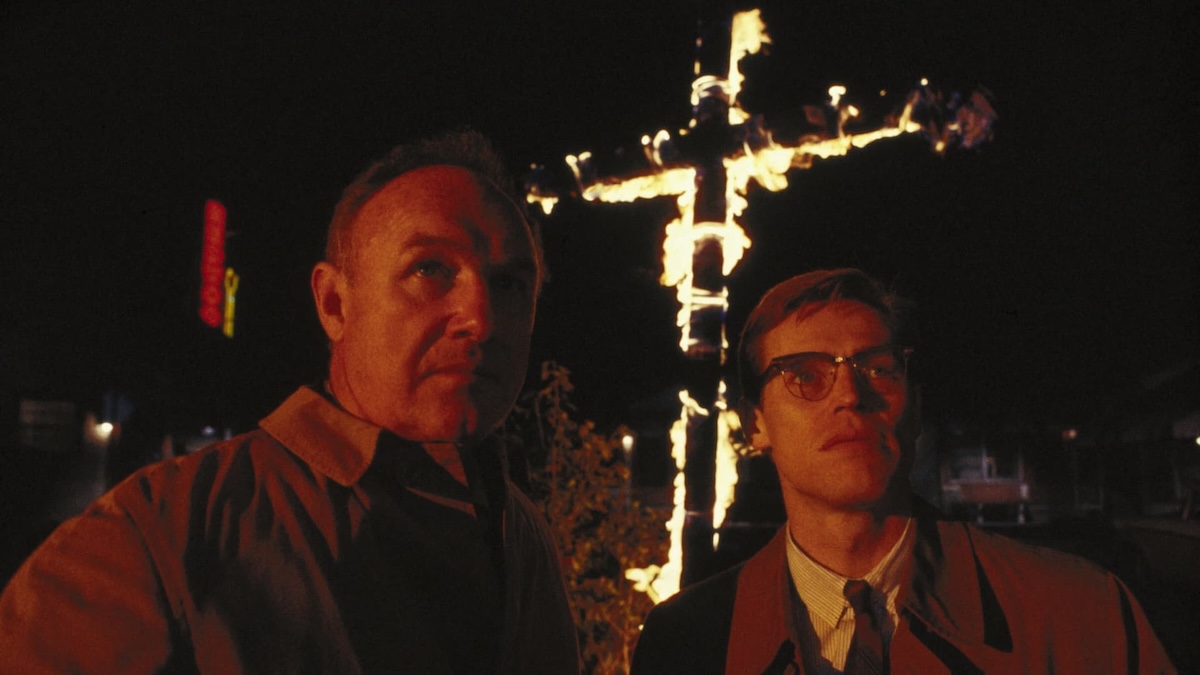
Alan Parker does a superb job behind the camera to capture the impassioned performances. He manages to oscillate between an exhilarating thriller and a deeply moving, poignant drama without missing a beat. The mere fact that Parker was capable of delivering chills in one moment and heart-pounding action the next, all without sacrificing message or narrative drive, is commendable. On top of this, Parker also allows small, relatively inconsequential scenes to unfold with a naturalism that lends the film an excellent pace.
However, the praise doesn’t end here. Parker also adroitly implements snippets of semi-documentary footage, giving the film an authentic texture. These dialogues were spoken directly to the camera by locals in Mississippi; often, Parker felt uncomfortable as he was unsure whether or not his subjects were acting out racial hatred or espousing their heartfelt views. Another brilliant stylistic choice was the use of editing in various sequences. Along with editor Gerald Hambling, Parker juxtaposes several moments of violence against civilised Mississippian society. Intercutting James Chaney’s funeral with shots of white Mississippian men shaking hands symbolically suggests they’re complicit in his death, while also hinting that the roots of such discrimination and violence can be found in the racist legislations that pervade America’s history. Underneath all of these ostensibly polite and sophisticated interactions, there lies a primitiveness, characterised by embittered racism and murderous intent.
Peter Biziou, the cinematographer who won an Academy Award for his work on this film, fully deserves the acclaim. In the chilling opening shot, Biziou manages to capture systemic racism with gut-wrenching simplicity: a white man drinks at a fountain designated for whites, whereas a small, black child drinks at a fountain designated for coloured people. Coupled with the haunting voice of Mahalia Jackson, this image sets the scene for a harrowing meditation on the depraved, repugnant acts humanity will commit. Biziou’s staging of some scenes is also phenomenal; frequently, it allows Hackman to use the space around him to intimidate, and since Biziou doesn’t cut in these sequences, we feel as though we are right there with him at the moment.
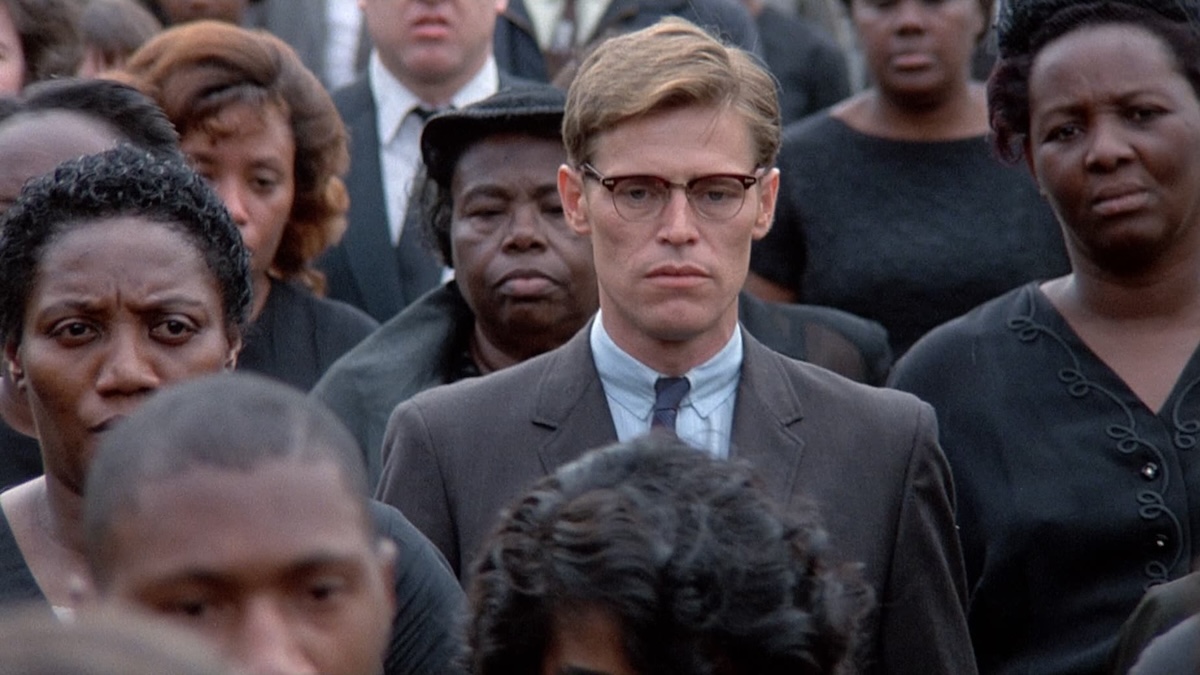
It’s worth noting that the film was considered to be controversial when it was first released. As it didn’t include all of the facts of the real-life case (and also misrepresented how the murder itself occurred), it was heavily criticised by some for sensationalising political struggle. Screenwriter Chris Gerolmo and director Parker have both admitted to using an artistic license for their representation of the story, defending the movie as a work of fiction that was loosely inspired by the case. Parker emphasised that the heart and spirit of the story are intact, which is ultimately what was most important.
This is a compelling argument, though one that doesn’t satisfy everyone. Director Spike Lee (Do the Right Thing) criticised the film for being just another white saviour narrative. There is some truth to this assertion: the depiction of the black community in Mississippi as being cowed and submissive is reportedly far from the truth. Though certainly ravaged and maltreated, the African-American population were anything but passive. While touching for some, Ward and Anderson driving away from Mississippi proud of a ‘job well done’ may ring hollow for others, or perhaps even a little insensitive; after all, it’s not as though everything was fixed in one fell swoop.
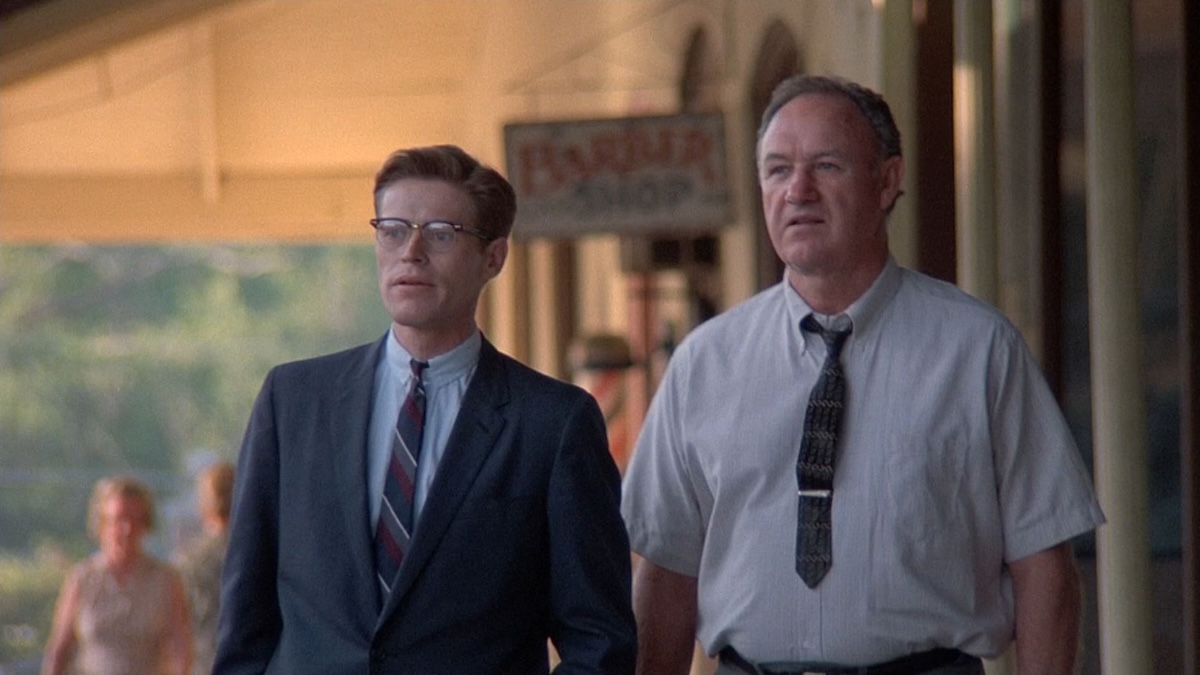
However, for me, the ending remains poignant and delicately done. While justice wasn’t served as much as it should have been, hope wins out. It’s a story of perseverance and fighting for what’s right. It’s also about finding the strength to combat such abject evil, even when it appears downright fruitless. Whether you would call it faith or righteousness, Parker conveys it as a quality worth having.
Parker also manages to impart such messages amid a riveting thriller, which is no easy feat. While the story may not be entirely factual, admitting the story to be a work of fiction intended to give a feel for the climate—while also creating a balanced narrative—is a defendable argument. Particularly because Parker does exactly that: in showing children lapping up the rhetoric at a Ku Klux Klan rally, he shows how such hatred takes root without pontificating. He doesn’t rely on sanctimonious monologues, but the raw power of images: a burning church, a cross aflame, and the charred, roasted carcasses of livestock. In this, he deftly communicates how fire is the most destructive force—after man, of course.
USA | 1988 | 128 MINUTES | 1.85:1 | COLOUR | ENGLISH

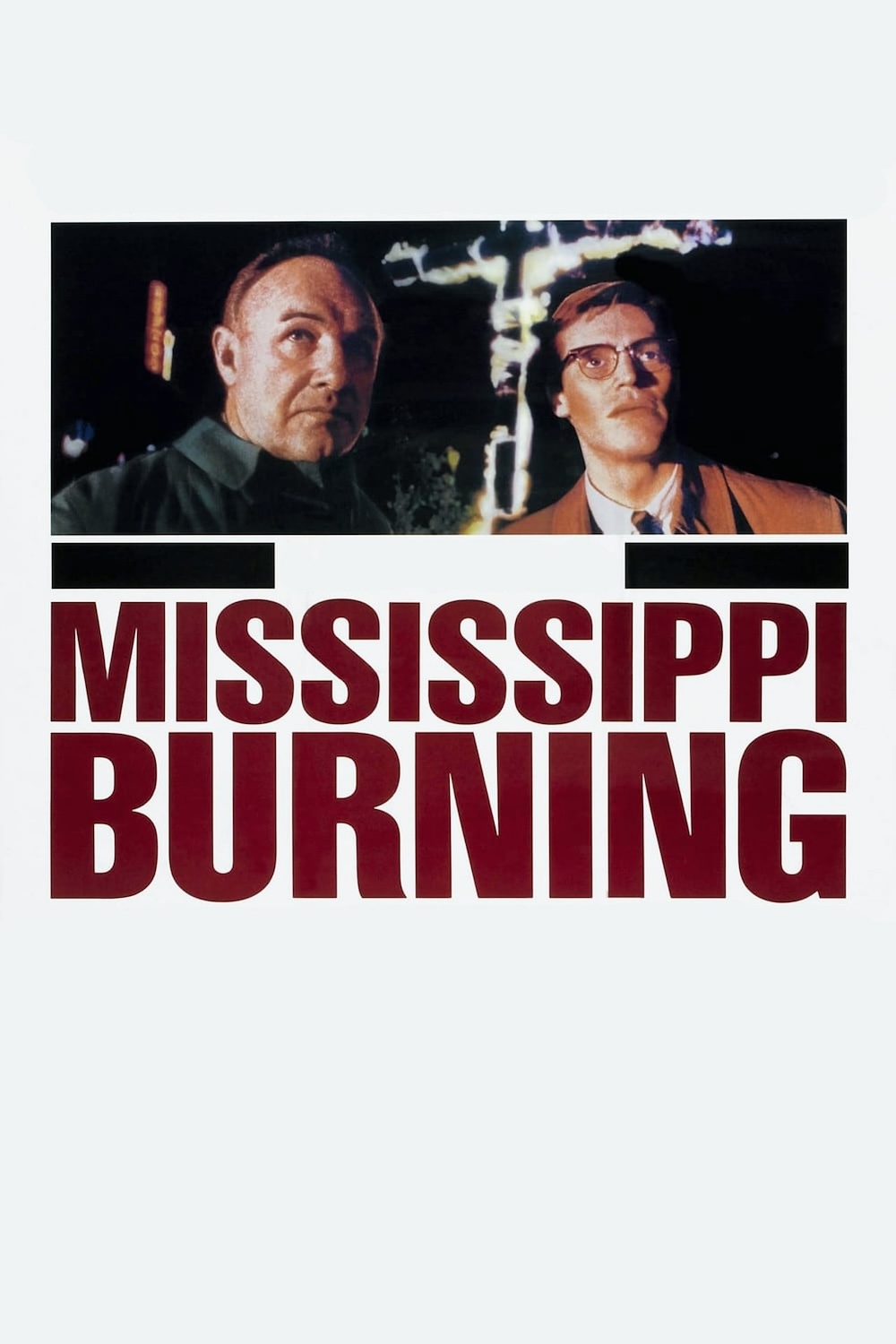
director: Alan Parker.
writer: Chris Gerolmo.
starring: Gene Hackman, Willem Dafoe, Frances McDormand, Brad Dourif, Michael Rooker, Stephen Tobolowsky.
